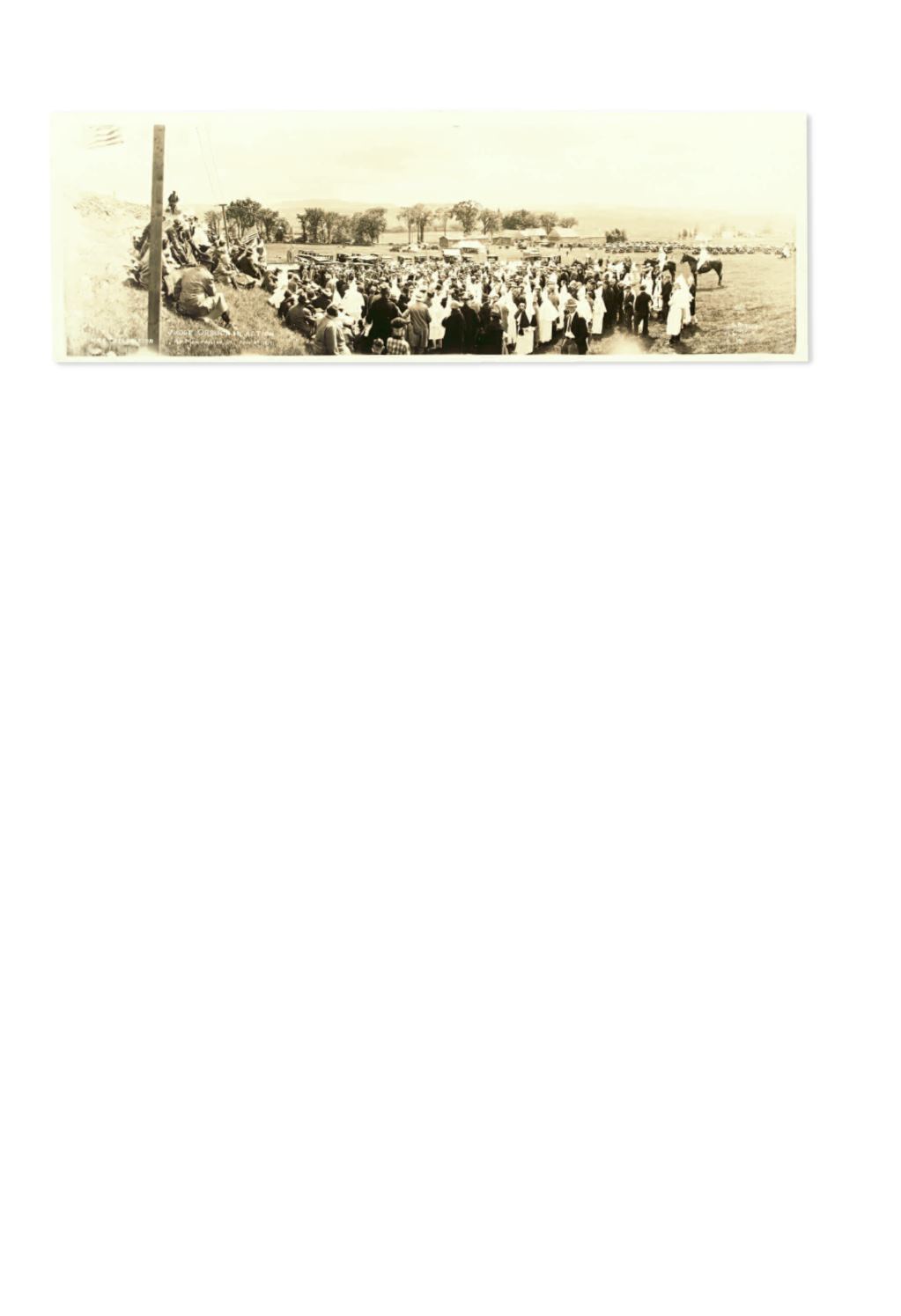

206
●
(CIVIL RIGHTS—KU KLUX KLAN.) VERMONT.
Two panoramic Klan
photographs.
The first, “Judge Orbison in Action. KKK Celebration at Montpelier VT,
July 4, 1927.” The second, “Klanspeople that finished in spite of the rain.” Panoramic pho-
tographs, 25 x 8 and 36 x 8 inches, light sepia toning with the captions in white in the
negative. By B.B. Barker.
Montpelier, VT 1927
[800/1,200]
A classic Fourth of July picnic, with an unlikely cast of characters. By the mid 1920’s the Klan
boasted a surprisingly high membership in Vermont, with great popularity among young women. The
latter would often go on “night rides” with young Klansmen, both dressed in the traditional white
robes. The Klan’s post-Civil War reorganization in the 1920’s brought with it a great deal of
“nativist” hatred directed at Jews and Catholic European immigrants while retaining their more tradi-
tional hatred of brown people and black people.
207
●
(CIVIL RIGHTS—LYNCHING.) COMMISSION ON INTERRACIAL
COOPERATION.
Depression Intensifies the Race Problem.
20 pages. 4to, original;
printed stiff gray wrappers, lettered in red; faint vertical crease suggesting this might have
once been folded for mailing. [
TOGETHER WITH
]
A TYPED LETTER SIGNED FROM ROBERT
RUSSA MOTON
,
CHAIRMAN OF THE COMMISSION
.
New York: Stabilization Fund of the Commission on Interracial Cooperation,
1930’s
[400/600]
The Commission on Interracial Cooperation was primarily a group of liberal Southerners who came
together in 1931 after a series of violent confrontations and lynchings. The message of this pamphlet is
that the conditions of the Great Depression are exacerbating the violence against blacks: “Within the
last two months, five Negro bellhops have been taken from a Florida hotel to a desolate country road.
Hands rope-bound, bodies stripped, they were flogged with limbs torn from nearby hickory trees and
told by their white assailants not to return to their jobs under threat of death.” Such was the atmos-
phere of the beginning of the 1930’s. Within a year, the Scottsboro Boys and the arrest of Angelo
Herndon would become national news.
RARE
.
ONLY ONE COPY LOCATED BY OCLC
.
208
●
(CIVIL RIGHTS.) WHITE, WALTER F.
Inscribed and signed photograph
of Walter White presiding at the ceremony for the unveiling of the John Brown
memorial.
8 x 10 black and white gelatin silver print photograph of White with another
unnamed gentleman who holds the plaque.
Washington: Scurlock Studio for the NAACP, 1932
[300/400]
A mystery surrounds this plaque and the stone it was set in. Somewhere around 1950, it disappeared
and has not been found since.
206









